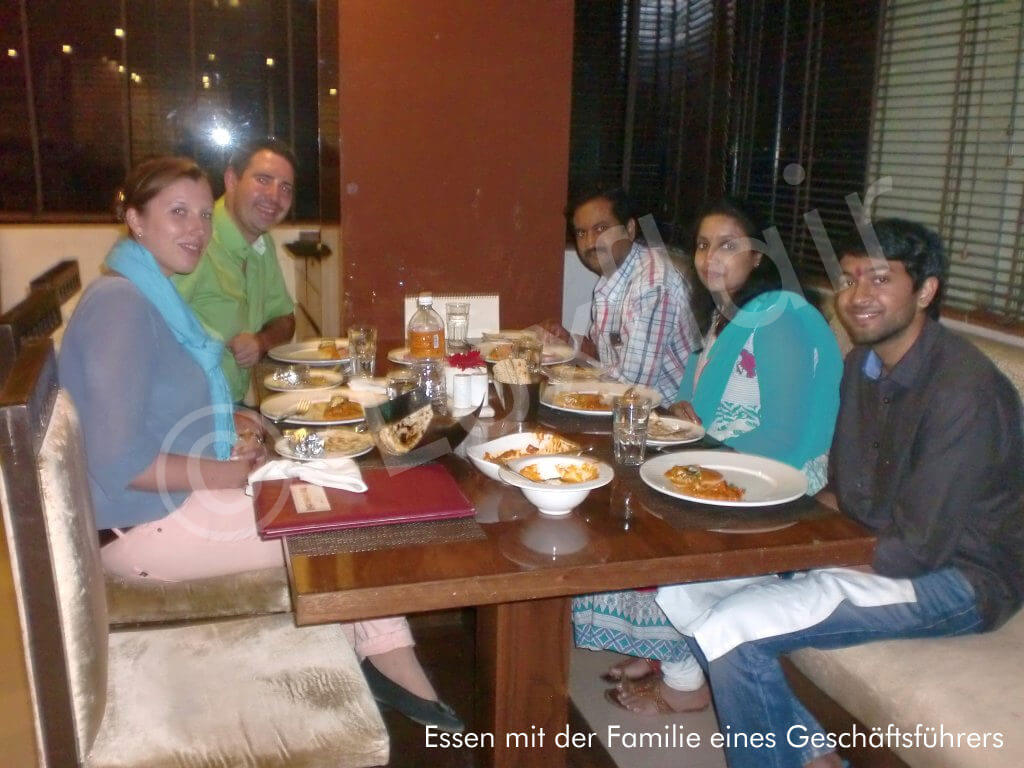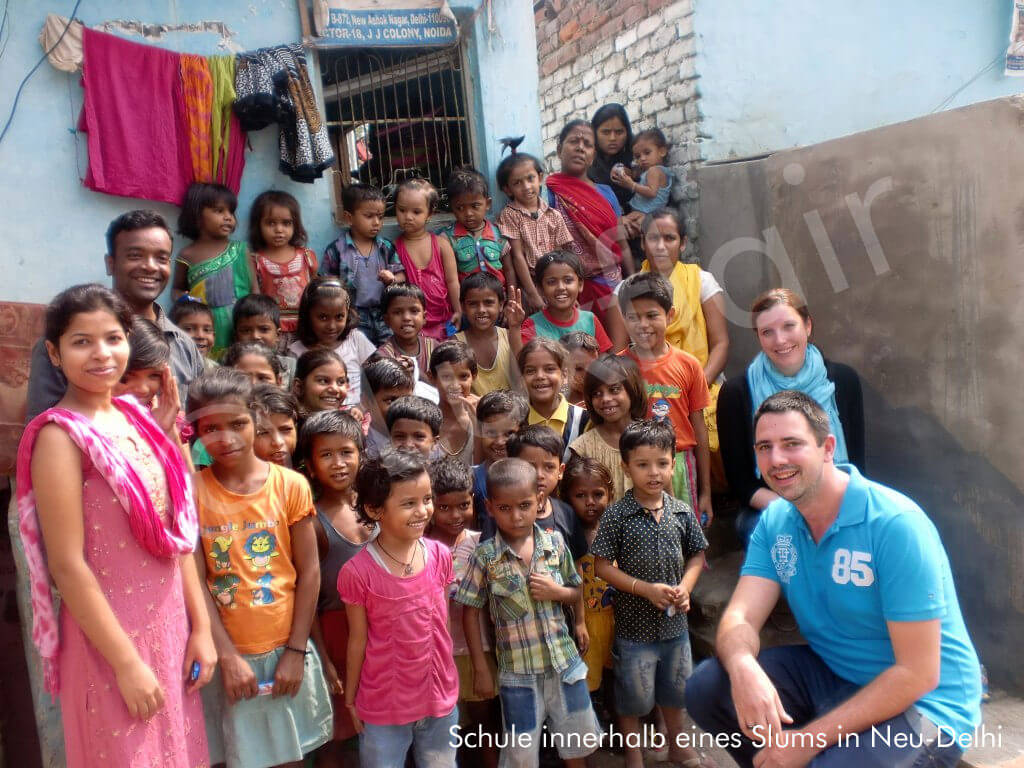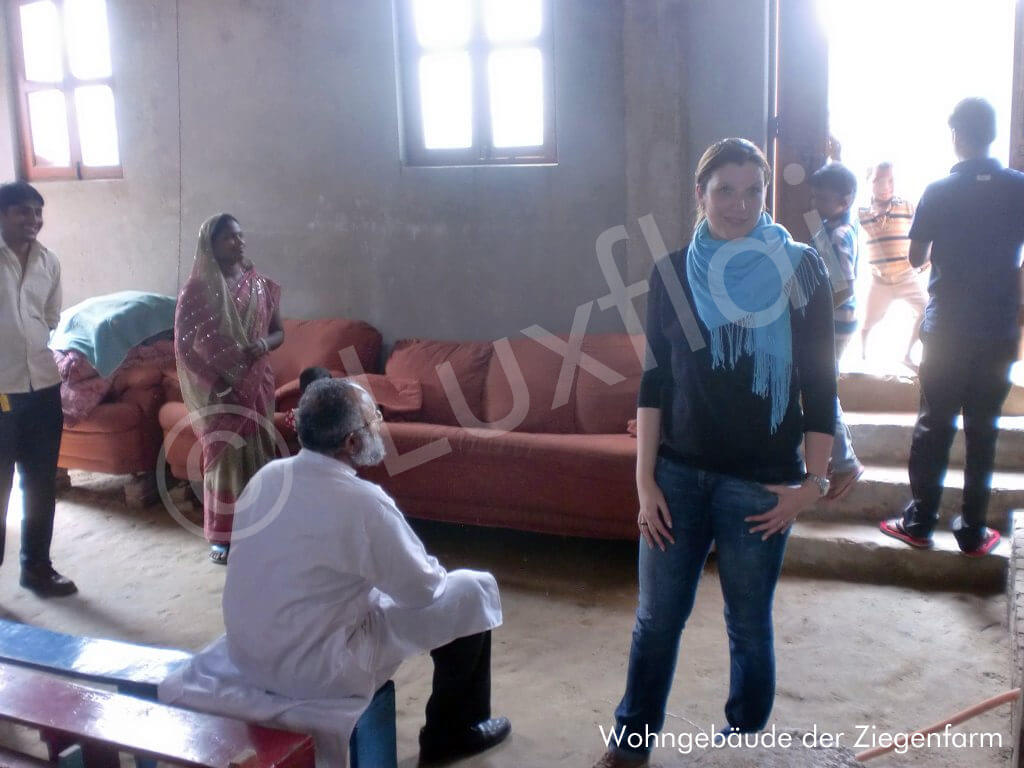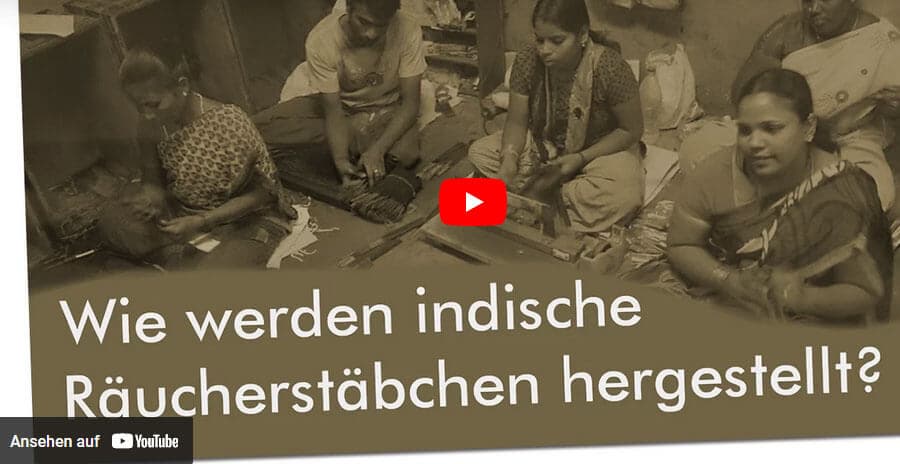Production of Indian incense sticks
We are delighted that you would like to find out more about incense sticks and their background. Below you will find detailed information, from production to our associated projects. We hope you enjoy reading and watching the video.
Ingredients of Indian incense sticks
- thin bamboo stick
- ground charcoal or wood powder (depending on the type of incense stick) mixed with a plant-based gum mixture
- various scented oils and flavours
Manual production
The production of Indian incense sticks has a very long tradition in India. In early times, the smoking incense sticks were mainly used for medicinal and spiritual purposes. Nowadays, incense sticks are very popular in the western world as room fragrances, mainly due to their many sensual scents.
The most commonly produced Indian incense sticks are black incense sticks that are rolled by hand, dipped in scented oil and then dried. A mixture of charcoal or a mixture of wood powder and various rubber resins is usually used as a carrier for the various fragrances.
Indian incense sticks based on charcoal
For the production of Indian charcoal-based incense sticks, a sticky mass consisting of charcoal and vegetable rubber mass is first applied around the bamboo stick. The incense stick is then dried (1st drying process). After the carrier mass has hardened, the stick is dipped into the desired fragrance oil and soaked up the fragrance. The incense stick is then dried again (2nd drying process).
Indian incense sticks based on wood powder
In the production of Indian incense sticks with wood powder, the fragrances are added directly to the finely ground wood. Here too, the sticky mass of wood powder and scented oils is first rolled around the bamboo stick and then dried. To prevent the sticks from sticking together with the freshly applied incense mixture, they are then rolled again in dry wood powder and dried again immediately afterwards.
After each final drying process, all incense sticks are thoroughly checked again. This ensures that all manufactured incense sticks leave production without any defects. Defective incense sticks are shredded and reused for production.
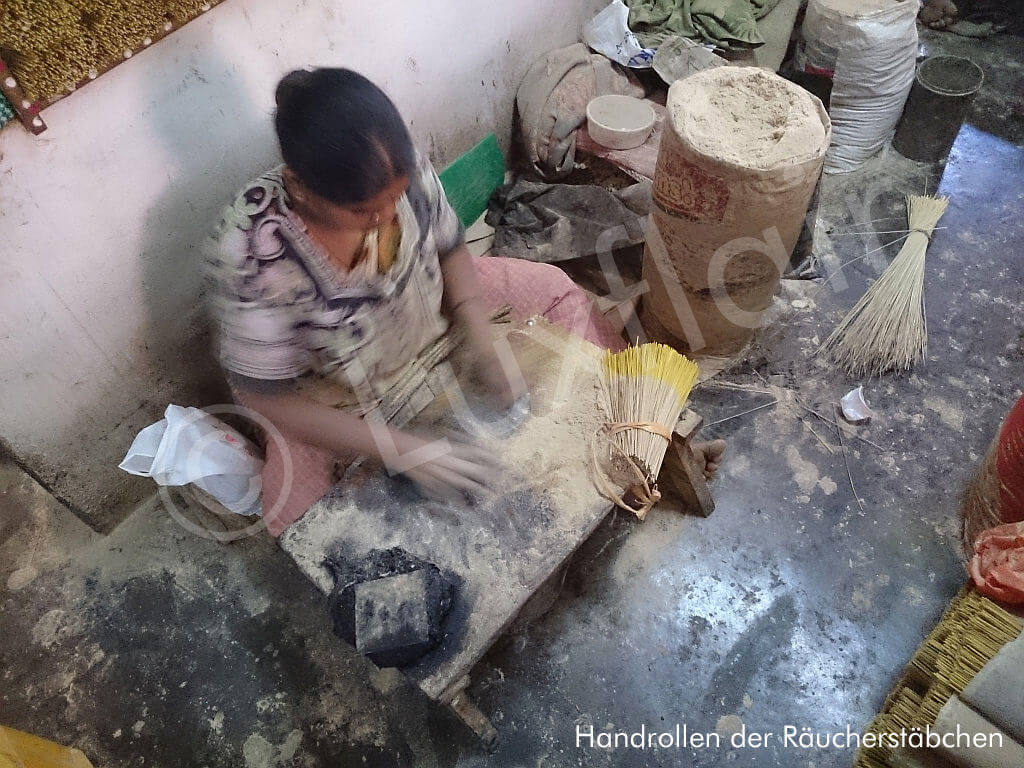
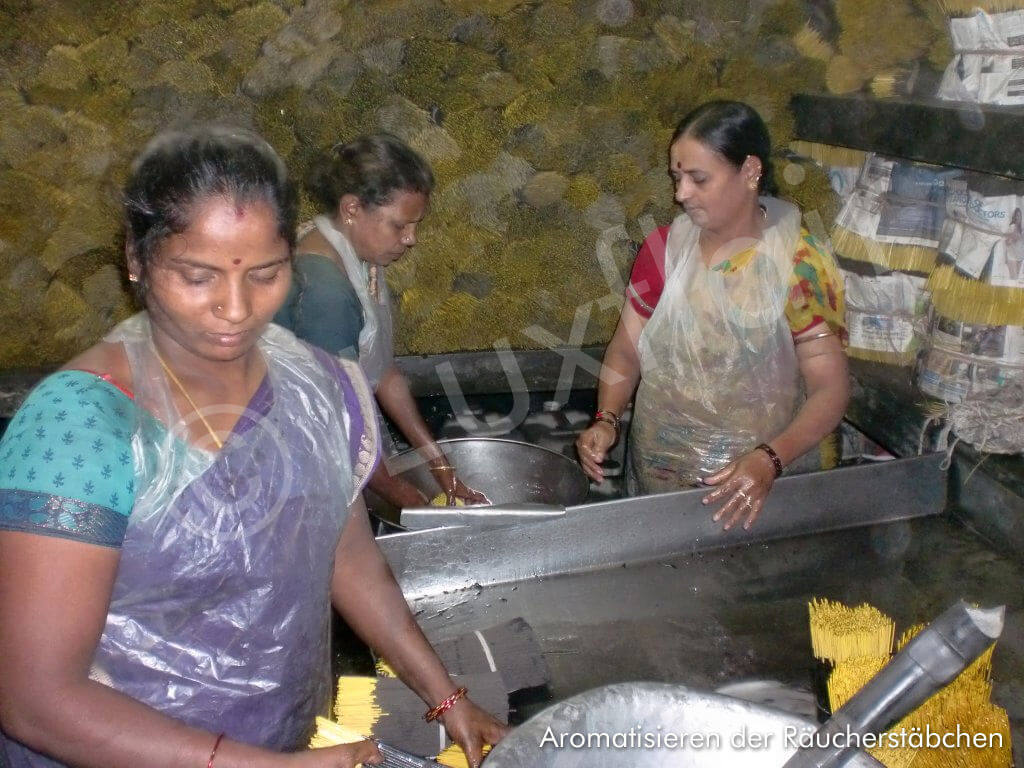

Machine production
In India, the production of incense sticks is increasingly being taken over by machines. One reason for this is that more and more prospective buyers expect all incense sticks to be exactly the same in length and shape and to show no signs of manual production methods.
However, the main reason for the increase in machine production is that India is constantly developing in terms of education and more and more children are attending state schools or taking part in voluntary learning programmes (see also Luxflair's commitment). It is therefore to be expected that the number of workers with very little schooling for jobs such as incense stick rolling will decrease significantly in the coming years. By switching from manual to machine production, many manufacturers are therefore primarily responding to the fact that there could be a shortage of labour for very simple tasks in the future.
Many women lose an important source of income for their families
The disadvantage of the switch to mechanised production methods is that the traditional rolling of incense sticks in India is carried out almost exclusively by women, most of whom have never attended school. For this reason, working in incense stick production is often the only way for many women to earn a living for themselves and their families. If incense sticks are increasingly produced by machines in the future, many of these women will lose an important source of income. From a purely qualitative point of view: Which is better - machine or manual? There is no significant difference in quality between incense sticks produced by hand or by machine. The only reason why machine production has increased in recent times is that structural changes have occurred in the education sector and are continuing to change.
Packaging
To pack the incense sticks, the men and women in the incense production facilities work together in teams. Everyone takes on a different task and tasks are swapped regularly. Packaging involves tasks such as counting and bagging the incense sticks and sealing the bags if necessary (some types of incense sticks only develop their more intense aroma fully when they come into contact with a lot of air and are therefore not packed in PE bags).
Other tasks that need to be carried out during packaging: packing the bags into boxes or cartons (individual packaging), sealing the cartons with adhesive tape and stowing the cartons in larger packaging units (bulk packaging). Having carried out all these tasks for many years, the men and women complete them at an immense speed. Once all the large packaging units have been packed, they are finally stowed away again in further large boxes, sealed and then made ready for overseas transport.
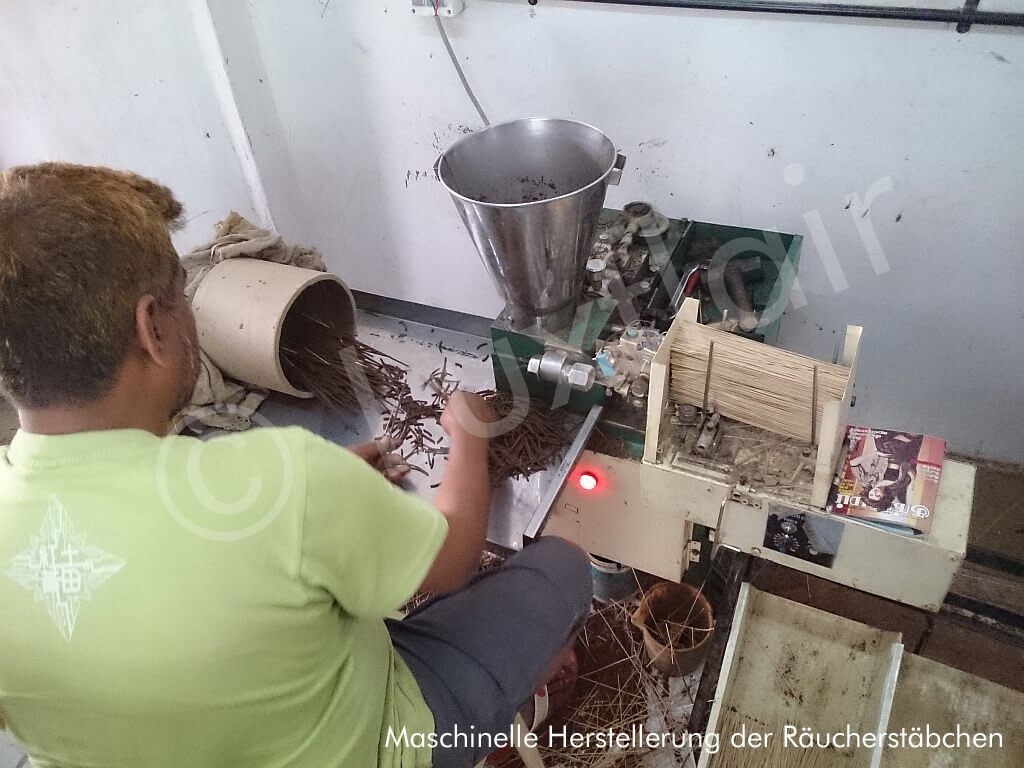
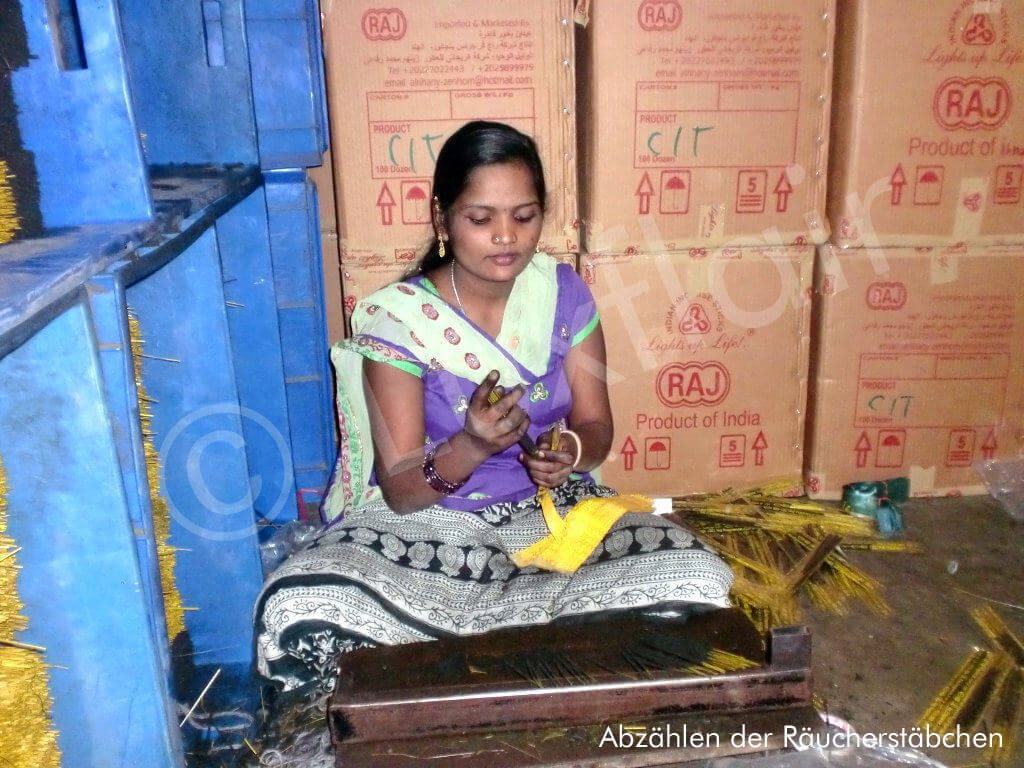
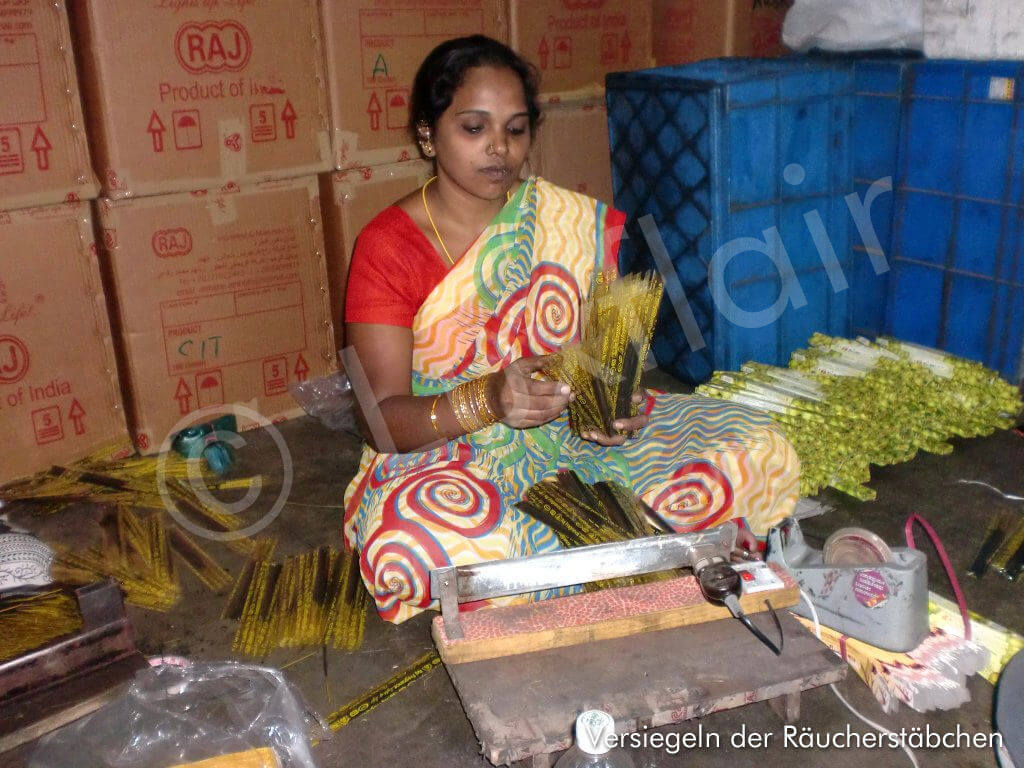
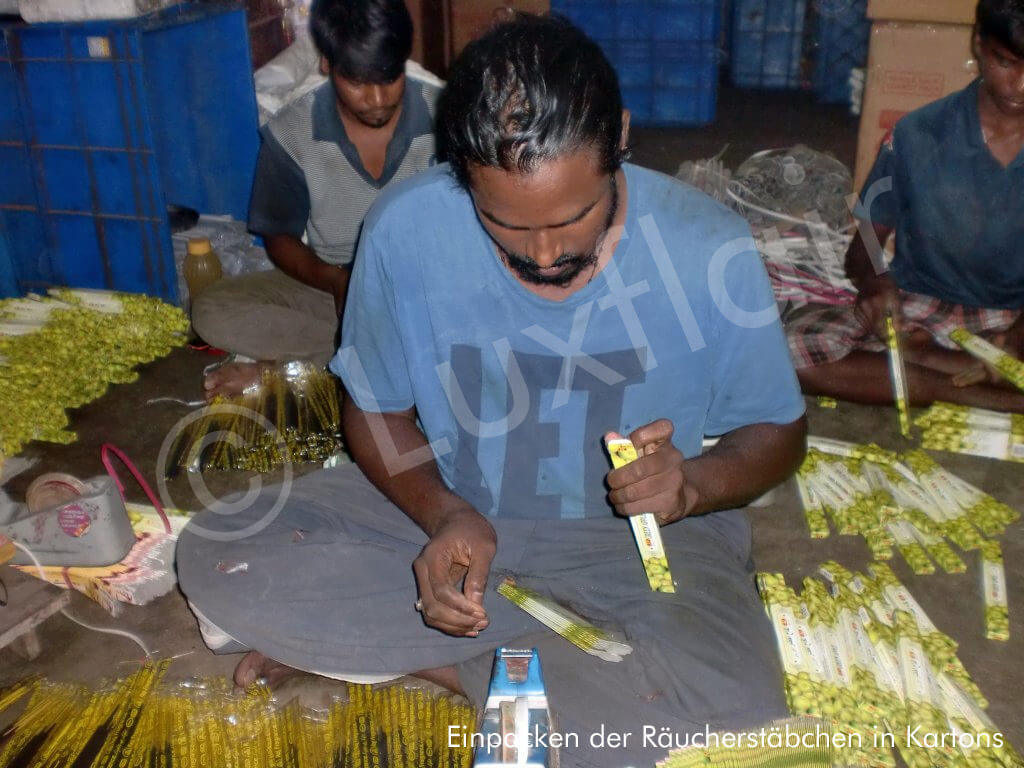
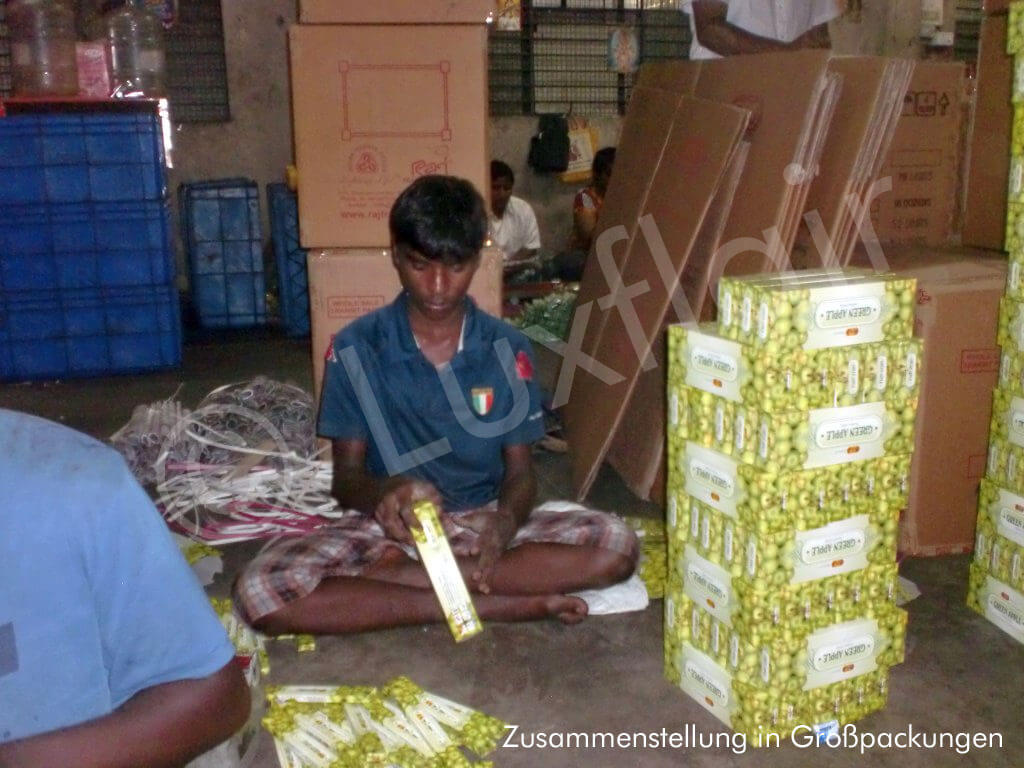
Special features at Luxflair
We not only supply incense sticks, but also want to ensure that the incense burns safely. That's why we always include a small leaflet in our parcels explaining how to handle and use the incense sticks correctly
We do not purchase our Indian incense sticks from wholesalers, but directly from local producers in India. This enables us to achieve very favourable purchasing conditions, which we pass on directly to our customers.
Despite our attractive conditions, some incense retailers offer their goods at even more favourable prices. Often the reason for very favourable price offers is that some of them offer remaining stock that is many years old. The decisive criterion in this context is the sharp change in the euro-dollar exchange rate over the last few years. In 2011, a purchase of $100 worth of incense sticks only equated to around €67, whereas in 2015 the equivalent value was already around €93. This corresponds to a price increase of around 30 per cent. Sellers of remaining stock from previous years therefore do not have to factor this price increase into their sales price. However, the goods are sometimes already several years old.
Innovative, direct approaches - the secret of good trade relations
Luxflair is always exploring new, interesting and often unusual avenues when it comes to trade relations and product development. We work closely with our local partners in India, value direct contact with them, talk a lot about opportunities for further product development and approach all our projects with a great deal of passion and commitment.
Due to our good trading relationships with our partners and the large sales volumes, all our incense sticks are manufactured directly and exclusively for us. This also allows us to have a direct influence on the type of packaging. For example, our customers also receive packaging with the fragrance type printed on it in German.
High esteem for our partners
Just as important to us as financial success for manufacturers and sellers is personal contact with our Indian partner companies and a high level of appreciation for the work performed and the quality delivered. To strengthen our trade relations, we visit India several times a year, exchange ideas with the factory managers and workers and encourage improvements. In recent years, we have developed a friendly relationship with many people at the production sites, which in some cases can be described as familial. Joint celebrations in private and professional settings are a clear sign that the collaboration is also highly valued on a human level by both sides.
The respect and recognition for the performance of our employees in Germany is just as high as the appreciation for our Indian partners. They are an essential part of our success. Their valuable work makes it possible for everything to be just right when you open your parcel: the transport-safe and elegant packaging of the incense sticks, the pleasant scent of fragrant aromas and the good feeling you get when you unpack the parcel that you have chosen the right product.

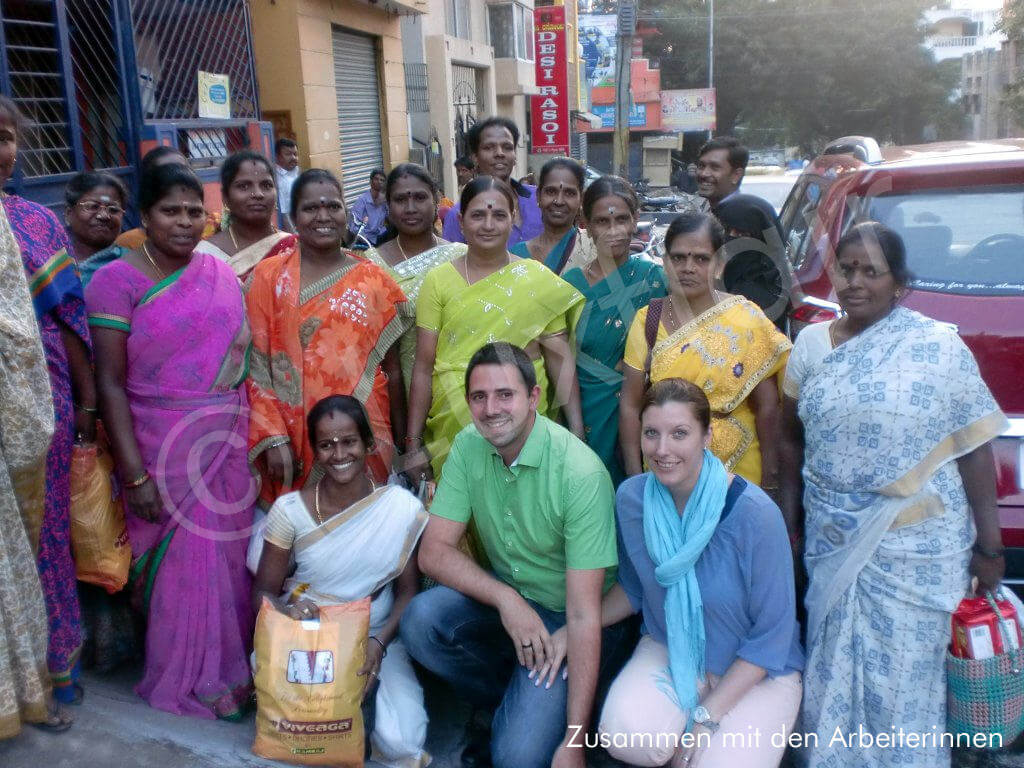

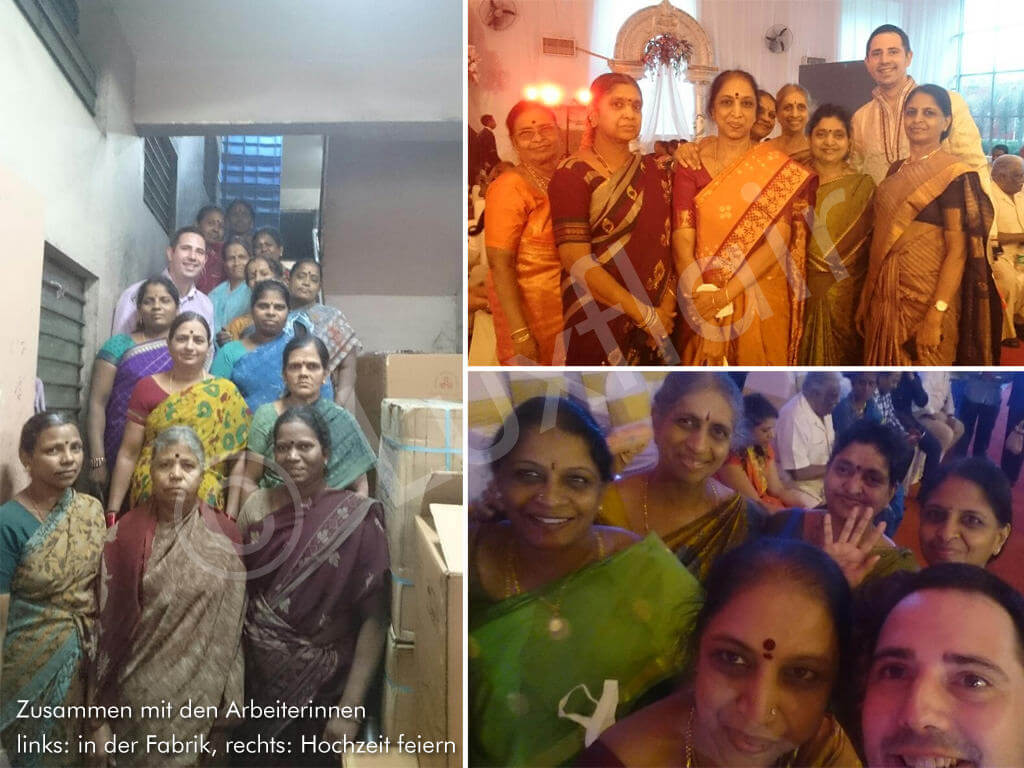
Social commitment
Anyone who has travelled to India knows how difficult the living and working conditions are in this country. Both the living situations in families and the conditions under which people work in factories are often difficult to understand by Western standards. One major problem in this context is the high level of poverty in the country, which affects a large proportion of the population. Time and again on our travels through India, we have come to know and appreciate people who have to make a living on an income far below the subsistence level.
We love India and its people. That's why we help.
We enjoy working with India and the people there. At the same time, we want to make a contribution to improving the living conditions of the local people. We are not taking the traditional route of donating money to institutions or charitable organisations. We want to help the families directly. That is why we are investing in goats in the Delhi region, or more precisely in pairs of goats. The pairs of goats we buy are given as gifts to families and groups. The goat's milk is a welcome source of food for the people in the metropolitan region. At the same time, people can use the goat pairs to establish a breeding programme. In this way, the yield of goat's milk can be increased over time. Goat breeding also offers the opportunity to sell individual animals and earn money in turn.
Administration, management and organisation of the project: we take care of all this ourselves in cooperation with our Indian supporters on site and at our own expense. This means that there are no administrative costs or other charges for the families. Our goat couple aid programme is certainly just a small drop in the ocean. Nevertheless, we are convinced that every support measure of this kind - no matter how small - makes the world a little bit better. Because as the saying goes: every drop wears away the stone.
